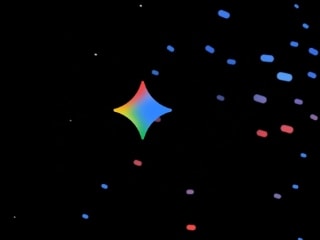- Home
- Science
- Science News
- NASA's Hubble Space Telescope Finds 6 Early, 'Dead' Galaxies That Ran Out of Cold Hydrogen
NASA's Hubble Space Telescope Finds 6 Early, 'Dead' Galaxies That Ran Out of Cold Hydrogen
NASA said it doesn't look like these kinds of dead galaxies rejuvenate even after minor mergers and accretions of nearby, small galaxies and gas.

Photo Credit: NASA/ Image Processing: Joseph DePasquale (STScI)
The study of early, distant, and dead galaxies, has been published in the journal Nature
Astronomers at NASA's Hubble Space Telescope and the Atacama Large Millimeter/Submillimeter Array (ALMA) have discovered at least six early galaxies, massive in size, which were “dead” when the universe was about 3 billion years old. These galaxies had run out of cold hydrogen, something necessary for the formation of stars. With no fuel to form stars, the galaxies were running “empty”, NASA said.
Lead author Kate Whitaker said that at this point in the universe — 3 billion years after the Big Bang — all galaxies should be forming lots of stars, adding that it's the "peak epoch" of star formation. So what happened to all the cold gas in these galaxies so early on, asks Whitaker, also an assistant professor of astronomy at the University of Massachusetts, Amherst.
This study of early, distant, and dead galaxies, has been published in the journal Nature and was part of the REQUIEM -- Resolving QUIEscent Magnified Galaxies At High Redshift -- programme. The REQUIEM team uses huge foreground galaxy clusters as natural telescopes.
It doesn't look like these kinds of dead galaxies rejuvenate even after later minor mergers and accretions of nearby small galaxies and gas, NASA said. Eleven billion years later, when analysed in the present-day universe, these compact galaxies are thought to have evolved to be larger but are still "dead", for they form no stars now.
While the US space agency said that the six galaxies in question lived "fast and furious" lives and formed stars in a short time, why they ran out of cold oxygen and then stopped creating stars remains a mystery.
Did a supermassive black hole in the galaxy's centre turn on and heat all the gas? Whitaker said that if that is the case the gas could still be there, but it's hot.
The next possible explanation, according to Whitaker, is that the gas could have been expelled, and now it's being stopped from accreting back onto the galaxy. Or the galaxy just use it all up and the supply is cut off, she says, adding that these are among the questions the team will continue to explore following new observations.
Catch the latest from the Consumer Electronics Show on Gadgets 360, at our CES 2026 hub.
Related Stories
- Samsung Galaxy Unpacked 2025
- ChatGPT
- Redmi Note 14 Pro+
- iPhone 16
- Apple Vision Pro
- Oneplus 12
- OnePlus Nord CE 3 Lite 5G
- iPhone 13
- Xiaomi 14 Pro
- Oppo Find N3
- Tecno Spark Go (2023)
- Realme V30
- Best Phones Under 25000
- Samsung Galaxy S24 Series
- Cryptocurrency
- iQoo 12
- Samsung Galaxy S24 Ultra
- Giottus
- Samsung Galaxy Z Flip 5
- Apple 'Scary Fast'
- Housefull 5
- GoPro Hero 12 Black Review
- Invincible Season 2
- JioGlass
- HD Ready TV
- Laptop Under 50000
- Smartwatch Under 10000
- Latest Mobile Phones
- Compare Phones
- Honor Magic 8 RSR Porsche Design
- Honor Magic 8 Pro Air
- Infinix Note Edge
- Lava Blaze Duo 3
- Tecno Spark Go 3
- iQOO Z11 Turbo
- OPPO A6c
- Samsung Galaxy A07 5G
- Lenovo Yoga Slim 7x (2025)
- Lenovo Yoga Slim 7a
- Lenovo Idea Tab Plus
- Realme Pad 3
- Moto Watch
- Garmin Quatix 8 Pro
- Haier H5E Series
- Acerpure Nitro Z Series 100-inch QLED TV
- Asus ROG Ally
- Nintendo Switch Lite
- Haier 1.6 Ton 5 Star Inverter Split AC (HSU19G-MZAID5BN-INV)
- Haier 1.6 Ton 5 Star Inverter Split AC (HSU19G-MZAIM5BN-INV)







![[Sponsored] Haier C90 OLED TV | Dolby Vision IQ, 144Hz OLED and Google TV in Action](https://www.gadgets360.com/static/mobile/images/spacer.png)









